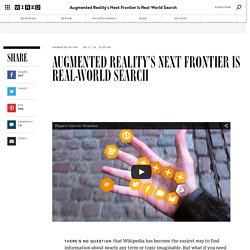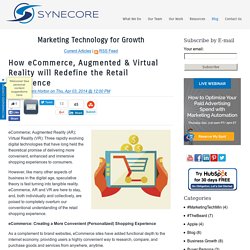

Hologram Definition. Researchers from Hewlett-Packard Laboratories have developed holographic display technology for mobile devices.

The images are not only three-dimensional but show objects from different angles.Credit: Hewlett-Packard Holography is a photographic technique that records the light scattered from an object, and then presents it in a way that appears three-dimensional. Holograms pop up in movies such as "Star Wars" and "Iron Man," but the technology has not quite caught up to movie magic — yet. Various types of holograms have been made over the years, including transmission holograms, which allow light to be shined through them and the image to be viewed from the side; and rainbow holograms, which are used for security purposes — on credit cards and driver's licenses, for example.
Recording a hologramCredit: Bob Mellish / Creative Commons. The sights and scents of the Sensorama Simulator. Sensorama Simulator Heilig seemed to like things that blew his hair back.

It's obvious from the wind generator in his Sensorama machine, but his worldly adventures seem to corroborate the assumption. After a few years of school, he served time overseas in the Army, and by 1946 he was in charge of the Medical Corps' motion picture services in Marseille, France. He left the military in 1947 and returned to school, studying painting in France, philosophy in Switzerland, film direction in Italy and later earning a Masters of Communication Arts in Pennsylvania. What is Real Time? A Webopedia Definition. Main » TERM » R » By Vangie Beal Occurring immediately.

The term is used to describe a number of different computer features. For example, real-time operating systems are systems that respond to input immediately. They are used for such tasks as navigation, in which the computer must react to a steady flow of new information without interruption. Lec2 irish. Augmented Reality and its Impact on the Internet, Security, and Privacy. By Mary Lynne Nielsen, Global Operations and Outreach Program Director, IEEE Standards Association Recently, I had the opportunity to lead networking sessions at Augmented World Expo (AWE) 2015.

I interacted with conference attendees to explore the challenges and opportunities facing the evolution of the Internet. Now in its sixth year, AWE is dedicated to exploring technology that turns ordinary experiences into the extraordinary and empowers people to be better at anything they do in work and life. Nearly 3000 people from the augmented and virtual reality, wearable tech, and Internet of Things spaces attended this year’s event. Technologies like Augmented Reality (AR) intersect with the Internet not only from a usage standpoint, but also from a delivery and information-gathering perspective. Mobile AR technology is poised to explode into the mainstream, with an expected compound annual growth rate (CAGR) of 96% over the next five years.
Mobile Augmented Reality Users to Approach 200 Million Globally by 2018, finds Juniper Research. Smartphone users to dominate adoption despite smart glasses developments Hampshire, UK – 6th November 2013: New findings from leading hi-tech analysts, Juniper Research, has shown that the mobile Augmented Reality (AR) market, is set to increase dramatically from 60 million unique users this year to nearly 200 million in 2018.

The market will expand from the early adopting gaming segment and navigation based utility to becoming an integral part of the consumer’s ecosystem. The report, Mobile Augmented Reality: Smartphones, Tablets and Smart Glasses 2013-2018, details that despite initial trepidation and single use applications of the technology, Juniper forecasts AR to become a key future platform for communication and commerce. AR has a potential to engage a new generation of consumers in a unique manner, combining the personal nature of mobile devices with the Internet’s wealth of accessible information. Can Augmented Reality Add Value to Print? Neither print nor digital alone are enough to truly lift your ROI for most applications.

You often need both, working together strategically, to create the lift you’re looking for. Print is tangible, easily saved for future use, can be passed on to others, can be very targeted, and is memorable. Digital is fast, has a cool factor, can be personalized, is easily accessed, and is used by consumers more and more each day. When print is integrated with digital, it can produce great results. There is a real symbiotic relationship between them that benefits both.
Augmented reality apps draw interest. Google-owned Motorola Mobility's acquisition of Viewdle this week, a jump in the number of visitors to the insideAR conference, and Nokia's recent launch of the City Lens application all illustrate growing interest in augmented reality.

After augmented reality became over-hyped about two years ago, interest waned a bit, but recently the idea seems to have gathered traction again. Google's Project Glass, a head-mounted display that started to be tested earlier this year, gave the concept a big boost, according to Martin Herdina, CEO of augmented reality vendor Wikitude. Augmented Reality Retail, Video Examples. Augmented Reality’s Next Frontier Is Real-World Search.
There’s no question that Wikipedia has become the easiest way to find information about nearly any term or topic imaginable.

But what if you need to know the details of “that thing you’re looking at,” but don’t know its name? Alternatives to text-based search have begun to catch on. Voice-recognition searches, for example, have rapidly become prevalent, and the functionality is built into nearly every new smartphone today. How eCommerce, Augmented & Virtual Reality will Redefine the Retail Experience. How eCommerce, Augmented & Virtual Reality will Redefine the Retail Experience eCommerce; Augmented Reality (AR); Virtual Reality (VR): Three rapidly evolving digital technologies that have long held the theoretical promise of delivering more convenient, enhanced and immersive shopping experiences to consumers.

However, like many other aspects of business in the digital age, speculative theory is fast turning into tangible reality. eCommerce, AR and VR are here to stay, and, both individually and collectively, are poised to completely overturn our conventional understanding of the retail shopping experience. eCommerce: Creating a More Convenient (Personalized) Shopping Experience As a complement to brand websites, eCommerce sites have added functional depth to the internet economy, providing users a highly convenient way to research, compare, and purchase goods and services from anywhere, anytime.
Augmented Reality: Creating an Enhanced Shopping Experience. Augmented Reality and its Impact on the Internet, Security, and Privacy. CPG Marketing Trends: Augmented Reality – Taking Brand Marketing to the Next Dimension. Augmented Reality, or AR, has taken the marketing world by storm in recent months.

Brands such as Lego, Best Buy and Calvin Klein have experimented with the new technology in an effort to increase consumer brand interaction. AR uses pattern-recognition technology to analyze programmed data and allow users to interact with a simulated image. Either web cams or in-store kiosks overlay 3-D images onto actual live images to create a virtual experience. Mobile Augmented Reality (AR) Market in China 2015 review, research, industry analysis, trends and forecast 2019. About Mobile AR AR technology blends digital content with the physical world.
It is used to display computer-generated images in a user’s field of vision and provide relevant information about objects in the real world. It allows the user to scan the physical real world environment and provides an enhanced or augmented experience by adding virtual computer-generated information.
Augmented Reality is here, and ready to Take Over the Japanese Market. Augmented reality (AR) is a technology that lets users see computer generated images in their field of vision, which creates a composite view of the world. The technology scans the physical world, and then enhances it with computer-generated visuals, which can provide relevant information about objects in the real world.
At the moment, augmented reality is mostly accessed through mobile devices, which blend digital content with the physical world. The potential of AR is massive, especially in Japan, which accounted for 33% of the total mobile AR market in 2014. The global market in growing at a 104.8% percent CAGR from 2014-2019, and is expected to become a major technology is sectors as broad as marketing, healthcare and manufacturing over the projected period.
But why is Japan specifically seeing such intense growth of mobile AR technology? Mobile Augmented Reality Market to See 96% CAGR to 2019. DALLAS, June 23, 2015 /PRNewswire/ -- SandlerResearch.org adds 3 new mobile augmented reality market research reports (1 Global, 1 focused on China mobile AR market and 1 on Japan) for 2015-2019 in the Information Technology intelligence collection of its library. The global mobile augmented reality market 2015-2019 report spread across 102 pages, mentioning 14 companies and supported with 23 exhibits is now available at . Key players of the global mobile augmented reality market mentioned in this research report include Augmented Pixels, Aurasma, Blippar, Catchoom, DAQRI, Google, Here (Nokia), Infinity Augmented Reality, Metaio, Qualcomm, Total Immersion, VividWorks, Wikitude and Zappar.
Several AR vendors have used crowdfunding to raise funds for their projects. This has benefited the market in several ways. Mobile Augmented Reality App Downloads to Reach 1.2 Billion Annually by 2019. The mobile augmented reality (AR) market is finally on the verge of fulfilling its potential and going mainstream, following years of hype. The proliferation of smartphones and tablets with ever-improving processing capabilities, sensors, and soon, 3D cameras, has provided an ideal medium for people to experience AR.
Additionally, the creation of AR content has been made much easier with a variety of tools consisting of simple drag-and-drop interfaces that allow developers to design their own applications. Aurasma Reveals Rapid Growth As Augmented Reality (AR) Market Accelerates. Case Study: How Office Depot Used Augmented Reality to Shift Transactions into Interactions. January 14, 2014 Background Information: Office Depot provides office products, services and solutions for every workplace environment. Its goal is to be a single source for everything customers need to be more productive, including the latest technology, core office supplies, print and document services, business services, facilities products, furniture and school essentials.
Global mobile augmented reality market size 2013-2018. Bit10. AR, VR will generate $150 billion in the next five years. Augmented Reality: Believe The Hype (Cycle) Strategy, Adoption, and Competitive Advantage of Mobile Services in the ... Generation tech demands digi-retail. Feasibility Study of Augmented Reality to Support Undergraduate Elevator Service Mechanic - University of Twente Student Theses. 75% of top brands have VR projects. What is the Future of Augmented Reality (AR) on Mobile? 10 Examples of Augmented Reality in Retail. Foolproof.co. Microsoft shows off what is possible with HoloLens at E3. Microsoft HoloLens augmented reality headset launched. Q&A With HoloLens Pioneers Object Theory. Your SEO optimized title. Mobile Augmented Reality (MAR) Market Trends. Feeling Mediated: A History of Media Technology and Emotion in America - Brenton J. Malin.